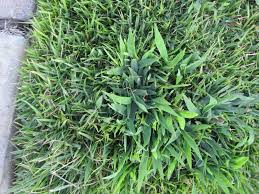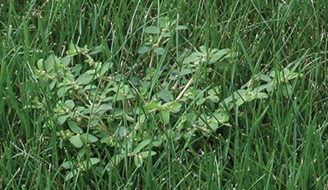Prevent Crabgrass in the Spring!
Crabgrass can be prevented in the spring so they don’t become a problem in the summer. Applying a pre-emergent to the lawn around March/ April Crabgrass, sometimes confused with Quack grass is an undesirable ID grass due to the weakness of the plant’s structure, its coarse texture and unsightly color.
These characteristics do not blend well into a fine-textured, dark green. Idaho Spray Service Control measures for annual and perennial weed grasses differ, Idaho Spray Service professional will be glad to discuss these methods with you.
Crabgrass can be reduced over a few seasons of special care resulting in a thick, dark green, crabgrass-free lawn that is well worth the patience and special care.
Pre-emergents: During this time, we fertilize your lawn and start our pre-emergent service controls the spread of wild grasses including tall fescue and crabgrass. If you currently have a wild grass infestation, gaining control over them could take time.
March/April : prevents germination of new crabgrass,foxtail,spurge and other annual weeds
What Is Crabgrass?
Crabgrass is the common name for a genus of plants (Digitaria) that includes both annual and perennial grasses. The species generally have wide, flat blades and produce long flower clusters and thousands of seeds per growing season.

How to Kill Crabgrass
Pre-emergent herbicides (also called “crabgrass preventers”) come in either a granular or a liquid form and kill crabgrass seedlings right as they germinate. Think of pre-emergent herbicides as forming an invisible shield across the soil’s surface that stops emerging crabgrass dead in its tracks.

How to Get Rid of Spotted Spurge in the Lawn
A spotted weed that thrives in the heat of summer spotted spurge (Euphorbia maculata) is an unsightly nuisance that not only takes up residence in weak areas of the lawn, but also invades landscape beds, sidewalk cracks, and vegetable gardens. Spotted spurge is easily recognized by its hairy red stems that branch out from a central point, tiny dark green leaves with a red spot, and dense, mat-like shape. This annual weed germinates in mid-spring and produces inconspicuous, tiny green flowers all summer long. In addition to its signature red spots, spotted spurge can be distinguished from other weeds by the milky sap that is produced when any part of the plant is damaged. In thin areas of the lawn, it can form a thick mat that can be up to 3 feet across.
How to Prevent Spotted Spurge
Follow these tips to keep spotted spurge from taking over your lawn.
Feed your lawn. Regular feedings (2 to 4 times per year) provide the nutrients your lawn needs to produce dense, green turf. Spotted spurge is not a competitive weed, so a thick lawn will keep spotted spurge out and prevent weed seeds from sprouting. Pre-emergent herbicides (also called ” preventers”) come in either a granular or a liquid form and killSpotted Spurge seedlings right as they germinate. Think of pre-emergent herbicides as forming an invisible shield across the soil’s surface that stops emerging crabgrass dead in its tracks.
